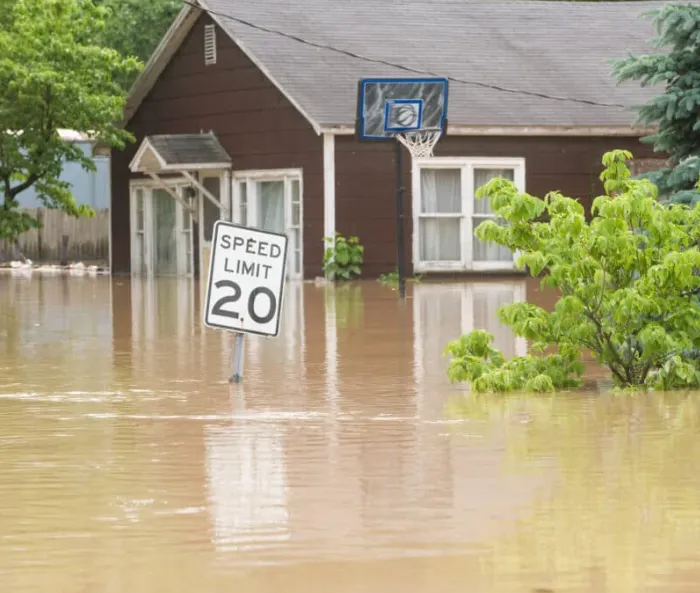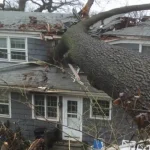If you own a home in Indiana or Ohio, you might think flood insurance is something only coastal homeowners need to worry about. The truth is, every property is technically located in a flood zone — the only difference is the level of risk. While homes in low-risk areas (often called “X zones”) aren’t typically required by lenders to carry flood insurance, that doesn’t mean you’re immune to flooding or that coverage isn’t worth considering.
What Flood Insurance Actually Covers
Flood insurance is specifically designed to protect against damage caused by rising water — something standard homeowners insurance does not cover. The National Flood Insurance Program (NFIP) defines a flood as “a general and temporary condition where two or more acres of normally dry land, or two or more properties, are inundated by water or mudflow.”
This includes scenarios like:
- Storm surge pushing water inland: When a major storm forces rivers to overflow and water backs up into homes, the resulting damage is considered flood-related. A standard homeowners policy won’t pay for those repairs — but a flood policy will.
- Water main breaks: Even man-made flooding, like a city water main bursting and flooding streets and homes, is classified as rising surface water. Your homeowners insurance would likely exclude it, leaving a flood policy as your best protection.
Why Flood Insurance Matters — Even in “Low-Risk” Zones
Even if you’re not in a high-risk area, flooding can still happen. Consider these questions:
- Are you near a river, creek, or stream?
- Do you live in a city where water mains are common?
- How often does heavy rain hit your area — and where does that water go?
- Does your home have a basement?
If you answered “yes” to any of these, flood insurance could save you thousands of dollars in the event of water damage. Many homeowners don’t realize that just an inch of water can cause tens of thousands of dollars in damage.
Where to Get Flood Insurance
Flood insurance is most commonly purchased through the National Flood Insurance Program, but private insurers also offer policies — sometimes with broader coverage or competitive pricing. Keep in mind that NFIP policies usually come with a 30-day waiting period before coverage begins, unless it’s required at the time of closing on a new home. That means you can’t wait until a storm is forecasted to buy it; planning ahead is essential.
How Much Does It Cost?
The cost of flood insurance depends on several factors, including your property’s location, elevation, and whether you have a basement. Homeowners in lower-risk “preferred” zones can often get coverage starting at around $150 to $200 per year. Homes in higher-risk areas will pay more, but the protection it provides far outweighs the financial risk of going without it.
Final Thoughts
Flooding isn’t just a coastal problem — it’s a reality in the Midwest too. Whether you live near a river, in a city with aging infrastructure, or in a neighborhood prone to heavy rain, flood insurance can be a critical layer of protection. Even if your home is in a preferred flood zone, investing in coverage could be the difference between a quick recovery and overwhelming financial loss.











